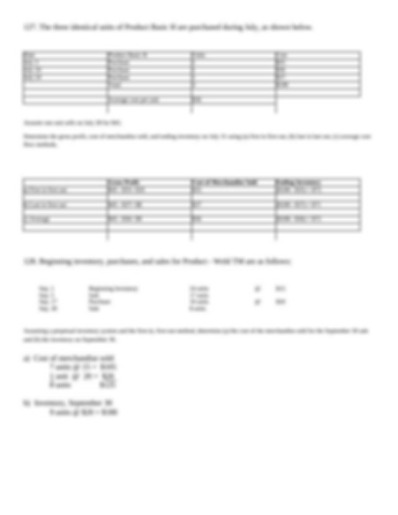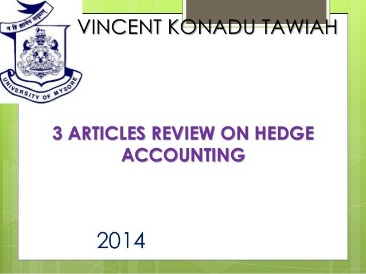Content

Each of these accounts must be zeroed out so that on the first day of the year, we can start tracking these balances for the new fiscal year. Remember that the periodicity principle states that financial statements should cover a defined period of time, generally one year. If we do not close out the balances in the revenue and expense accounts, these accounts would continue to contain the revenue and expense balances from previous years and would violate the periodicity principle. Likewise, income statement details are often transferred to the income summary accounts whereby expenses are deducted from revenues to ascertain whether a firm made a profit or a loss.
To complete the income summary account, the last step to preparing it must be one column for credit and another for debit. The credit side will be the company’s total income, and the debit side is the company’s total expenditure. All income statement balances are eventually transferred to retained earnings. A closing entry is a journal entry made at the end of the accounting period.
What Is a Closing Entry?
But taking the time to learn about financial statements, such as an income statement, can go far in helping you advance your career. However, rather than credit the expense balance to transfer it, businesses must debit it, given that expenses are already credited. Once all the temporary accounts are compiled, the value of each account is then debited from the temporary accounts and credited as a single value to the income summary.

Consider enrolling in Financial Accounting or our other online finance and accounting courses, which can teach you the key financial topics you need to understand business performance and potential. Download our free course flowchart to determine which best aligns with your goals. This income statement shows that the company brought in a total of $4.358 billion through sales, and it cost approximately $2.738 billion to achieve those sales, for a gross profit of $1.619 billion. Horizontal analysis makes financial data and reporting consistent per generally accepted accounting principles .
What Is the Purpose of Preparing an Income Summary and an Income Statement?
We have completed the first two columns and now we have the final column which represents the closing process. Sometimes it does not provide a correct picture of the company as it includes operating and non-operating revenues and expenditures. Management can keep a record of the performance of the company by assessing the summary of income of past years and conclude whether the company is undergoing profit or loss. Here’s an example of an income statement from a fictional company for the year that ended on September 28, 2019. In addition to helping you determine your company’s current financial health, this understanding can help you predict future opportunities, decide on business strategy, and create meaningful goals for your team. All the information necessary for taxes is consolidated in a summary.
- XYZ Inc is preparing an income summary for the year ended December 31, 2018, and below are the revenue and expense account balances as of December 31, 2018.
- The income summary account shows performance for only one period.
- The income statement is a permanent account that reflects the revenue and expenses of a company for a given period.
- This way each accounting period starts with a zero balance in all the temporary accounts.
- A net loss would decrease retained earnings so we would do the opposite in this journal entry by debiting Retained Earnings and crediting Income Summary.
- Expense accounts such as cost of goods, depreciation expense, office rent expense, supplies expense, utilities expense, wages expense and interest expense will appear on the debit side of the income summary account.
The business owners can refer to this document to see if the strategies have paid off. Based on their analysis, they can come up with the best solutions to yield more profit.
Beginning Balances
The https://intuit-payroll.org/ in Retained Earnings agrees to the Statement of Retained Earnings and all of the temporary accounts have zero balances. If you have only done journal entries and adjusting journal entries, the answer is no. Let’s look at the trial balance we used in the Creating Financial Statements post. Think about some accounts that would be permanent accounts, like Cash and Notes Payable. While some businesses would be very happy if the balance in Notes Payable reset to zero each year, I am fairly certain they would not be happy if their cash disappeared.
Is the income summary account an asset?
a. The Income Summary account is classified as an owner's equity account.
All What Is The Income Summary Account and revenue accounts now show a zero balance, and the income summary has a credit balance of $44,000. In addition, the income summary closing entry tells us the company’s profit for the year. There are generally two components of the income summary statement, namely the debit side and credit side. The income summary is an intermediate account to which the balances of the revenue and expenses are transferred at the end of the accounting cycle through the closing entries. This way each temporary account can be reset and start with a zero balance in the next accounting period.
Non-operating activities transferred to income summary
It improves the review of a company’s consistency over time, as well as its growth compared to competitors. An income statement is one of the most common, and critical, of the financial statements you’re likely to encounter. One of the significant disadvantages of income summaries is that they are compiled using operating and non-operating functions. Doing this makes it so they do not provide an accurate financial picture of the company’s cash flow. Often confused with income statements, the two are very different and should not be interpreted as being the other. The key similarity is that they both report total nets and losses.
- As you can see, the income and expense accounts are transferred to the income summary account.
- An income summary of one year is not helpful for financial performance analysis.
- By conducting a horizontal analysis, you can tell what’s been driving an organization’s financial performance over the years and spot trends and growth patterns, line item by line item.
- The values are debited from their respective accounts and credited to the income summary.
- Temporary vs. permanent account – The most basic difference between the two accounts is that the income statement is a permanent account, reflecting the income and expenses of a company.
At the end of the year, closing entries are used to combine revenues and expenses with the Retained Earnings equity account. The Income Summary account is only used during the year-end closing process — it facilitates the transfer of balances away from the temporary accounts and into the permanent accounts. Accountants may perform the closing process monthly or annually. The closing entries are the journal entry form of the Statement of Retained Earnings. The goal is to make the posted balance of the retained earnings account match what we reported on the statement of retained earnings and start the next period with a zero balance for all temporary accounts. Expenses account closure – To close all the expense accounts, all the debit balance of expense accounts is transferred to the income summary account.
So, the ending balance of this period will be the beginning balance for next period. The above example is one of the simplest types of income statements, where you apply the values of income, expense, gains and loss into the equation to arrive at the net income. Since it is based on a simple calculation, it is called asingle-step income statement. After these two entries, the revenue and expense accounts have zero balances. The first is to close all of the temporary accounts in order to start with zero balances for the next year.
INOGEN INC MANAGEMENT’S DISCUSSION AND ANALYSIS OF FINANCIAL CONDITION AND RESULTS OF OPERATIONS (form 10-K) – Marketscreener.com
INOGEN INC MANAGEMENT’S DISCUSSION AND ANALYSIS OF FINANCIAL CONDITION AND RESULTS OF OPERATIONS (form 10-K).
Posted: Fri, 24 Feb 2023 21:08:10 GMT [source]
A debit would be done to the revenue account, and the credit would be done to the income summary account. Once all the entries are passed, all the values in the revenue account would amount to zero. The purpose of an income summary account is to close the books. It is used when a company chooses to transfer the balance of individual revenue and expense accounts directly to retained earnings or when a company chooses to close the books using an income statement. The income summary account is an intermediate account that is used to close the books. It is used when a company chooses to transfer the balance of individual revenue and expense accounts directly to retained earnings. The income summary account is also used when a company chooses to close the books using an income statement.